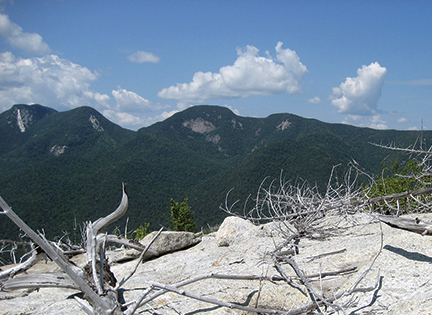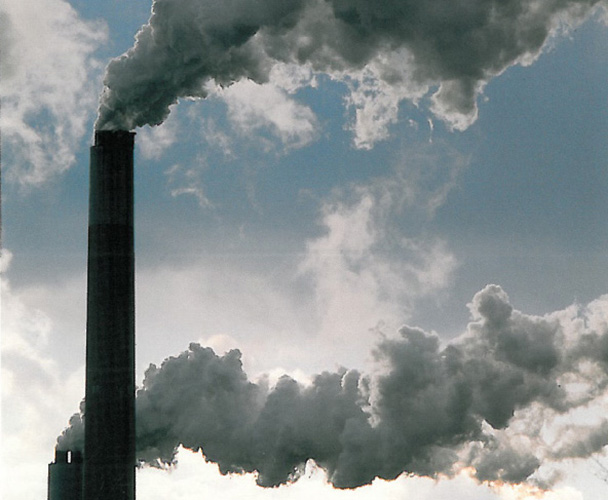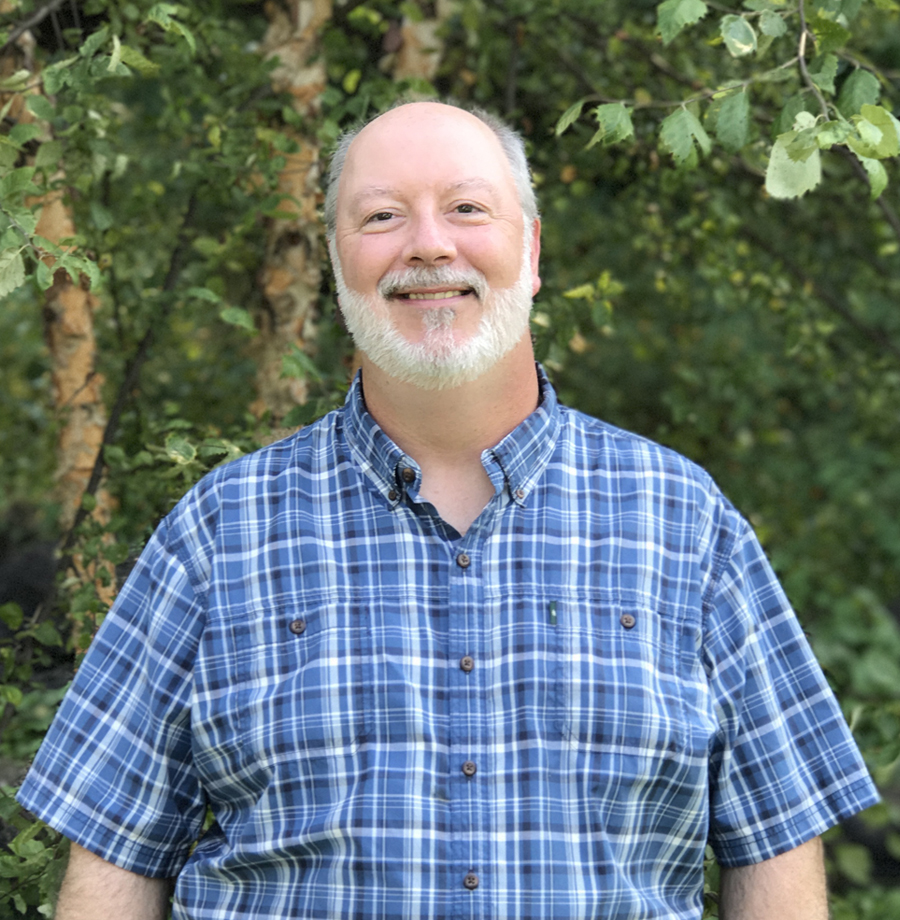
A New Standard for Air Pollution Needed
By: John Sheehan - Adirondack Council Director of Communications
Thursday, March 14, 2019
The Adirondack Park needs a new standard for air pollution.
Even though New York is moving closer to a renewable energy future, the smoke-belching, coal-fired power plants of the Midwest continue to cause smog, soot and acid rain here in New York.
I have been working to solve that problem for nearly 30 years with the Adirondack Council. It has been a long, hard road. And just as the end of the journey is in sight, the Trump Administration’s deregulatory efforts are erecting a formidable obstacle. We need a way around it, and soon.
Don’t get me wrong. We have much to celebrate. We have made huge progress since the Adirondack Council first started fighting acid rain in 1975. Just look at any movie from the 1970s showing a cityscape of Manhattan, Boston or Washington, DC in the summer. The air is oppressively thick with smog. Visibility is awful. That is not how our part of the world looks today.
The First Acid Rain Programs
When I was in college in the early 1980s, the Legislature ordered the Dept. of Environmental Conservation (DEC) to make deep cuts in the sulfur- and nitrogen-based air pollution that causes acid rain and smog. By 1990, Congress had ordered the U.S. Environmental Protection Agency (EPA) to create an Acid Rain Program and to improve smog controls.

But the federal program that went into effect in 1995 was somewhat unscientific in its approach. The EPA’s goal was to cut sulfur dioxide pollution from power plants nationwide by 50 percent. The EPA didn’t believe that this would solve the acid rain problem. It was a start, but only a start. Industry howled anyway. Power companies said the program was too costly and would put power plants out of business. They wildly inflated their cost estimates and hired lawyers and lobbyists.
But, both Democrats and Republicans in Congress agreed something had to be done to stop the damage to forests, waters and fish in the Northeast.
Doing “something” seemed to be the EPA’s preferred method from then forward. It set pollution limits based on the limits of technology or the limits of political will. It adjusted those limits based on what industry could afford, after federal courts added that caveat (it doesn’t exist in the Clean Air Act). So the EPA today finds itself trying to design regulations that can survive lawsuits from polluters, rather than regulations that fully protect public health and the environment.
It’s easy to understand the polluters’ perspectives, even if you don’t agree. They are trying to protect their business interests. The Acid Rain Program’s pollution cuts were designed to save the lives of people and fish who live three states away. That won’t win them much support from the local ratepayers, who foot the bill. If they can’t see any end to the cuts that may eventually be required, then delay might seem to be their best weapon. No one wants to be subjected to ever-escalating prices of compliance.
The Clean Air Act takes some of the political/legal tug-of-war into account and requires the EPA to revisit its regulations every five years, and update them if needed. Currently, updates are needed. They don’t ever happen in five years, however. The updates also result in lawsuits and political fights, including attempts to slash the EPA’s funding so it cannot enforce the rules. In practice, the five-year updates take 10 to 15 years. So entire generations pass as this struggle plays out over the rules for each pollutant.
What we need is an air pollution reduction system that identifies the end of the regulatory game. We need a system that shows how much cutting will be enough, and what that will cost.
Long-term Testing Provides Information
Thanks to the DEC’s vigilance on acid rain, its constant testing and research has provided that answer.
The DEC has been studying the chemistry and pollution trends in Adirondack lakes for a long time (since 1985). It can say with great certainty exactly how much pollution can fall on sensitive locations before significant harm will occur. We know the lethal dose of acid rain-causing chemicals for a broad range of insects, fish, birds, mammals, reptiles, etc.
We also know which power plants pollute which parts of the country the most. This is a little trickier, because it involves studying wind and weather patterns, which change from day to day. But they follow general trends and are reasonably predictable.

For example: a power plant in Columbus, Ohio might pollute the Adirondacks 300 days out of the year, due to strong prevailing westerly winds. One in Hartford, Connecticut might pollute us only 30 days out of 365. EPA-mandated pollution sensors measure what is coming out of each smokestack, and a network of on-the-ground sensors measure what falls out of the sky. In the end, we know where the pollution is coming from today and have a fairly good idea of where it will come from tomorrow.
That means we can design a pollution control system that sets a threshold – a critical load of pollution – beyond which fatal damage will occur to a part of the Adirondack ecosystem. Therefore, regulators can now impose standards that bring pollution levels down below that critical load. And then they can stop ordering reductions.
Cap-and-Trade Program
Under the current cap-and-trade program for sulfur-dioxide and nitrogen oxides (the main causes of acid rain and smog), companies that cut their pollution below the required threshold would be rewarded for their ingenuity and innovation. Being cleaner than the law requires gives them extra pollution allowances. They can sell those to other companies or use the allowances themselves to expand their operations without exceeding the pollution cap.
Perhaps most importantly, it relieves some of the burden on the power companies to fight against the regulations. If they see they that cuts are being applied fairly and evenly to all power plants, they know their chances of overturning the rule in court are limited.
Plus, predictability is very important to power companies. They have to keep the lights on and power flowing all the time, regardless of changing conditions, weather and natural disasters. They make big investments on behalf of thousands of customers. They need to know they will have the revenue to cover those investments. Surprises are unwelcome. So their first tendency is to seek no change in regulations at all. While their next tendency has been to seek rollbacks of current regulations, that is costly and often unproductive. The last thing they want is a permanent struggle in which they have to fight regulation forever. So a predictable system -- with a fixed end point -- would actually be attractive.
New York State Needs to Be First
If we hope to persuade the rest of the nation that the EPA should do this, we will need to impose a critical loads limit on New York’s own air pollution first. That should not be hard. New York is poised to shut down and eliminate its remaining coal-fired power capacity by the end of 2020. It is among the leaders in its commitments to renewable energy development and energy conservation.
So a critical loads standard for New York power plants might be advisory in nature, requiring the state officials to keep track of power plant outputs, but expecting that our power production will be able to comply with the rules from the beginning.
Plus, New York already has some experience in this concept. The DEC uses a standard of “total maximum daily load” to measure the effectiveness of water pollution controls. The Adirondack Park Agency uses a similar concept to judge the capacity of specific parts of the public Forest Preserve to withstand human recreation. This system is designed to measure “acceptable levels of change” in the forest ecosystem.
Ultimately, we will need a critical loads standard on the federal level. If the EPA set such a standard, it could use it to protect all of the most sensitive places and most vulnerable people. For acid rain, it would have to impose greater controls on places that pollute the Adirondacks, Catskills, Hudson Highlands and the east end of Long Island, as well as the Green and White Mountains of New England, the mid-Appalachians and the Front Range of the Rocky Mountains. Rules for plants affected less acid-sensitive places (that have no smog problem either) wouldn’t need to be as strict.
Just as New York made the first regulatory move against acid rain, it must take the first step by enacting
a critical loads air pollution standard on its own power plants. Then, we must all work together to compel Congress to do the same for the entire nation.
|





